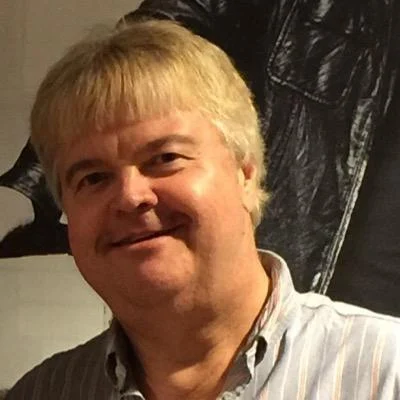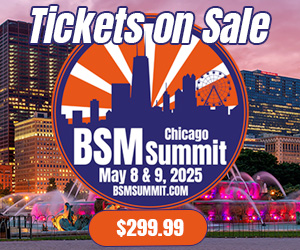To support the launch of the new Barrett Media, we’ve created a special series titled “20 Brands In 20 Days.” Highlighting successful stations across the country in various formats by conducting conversations with their brand leaders. Up next is Hubbard’s David Moore. David is the PD of Classic Rock KSLX, Phoenix. The station we are highlighting today.
Jeff Lynn: For as long as I can remember, KSLX has been Classic Rock for Phoenix.
David Moore: KSLX is a longtime Classic Rock station in the market. It’s been here since 1986, and I got here in 2016. The station was successful and pretty well-programmed.
However, I think that there were some maintenance issues on the radio station, and it kind of needed some personality, if you will. So, we were able to get Mark and Neanderthal, which was the morning show, into a pretty good place. They were, for the most part, almost always in the top three and key demos. But a couple of years ago, Mark retired, and at the same time, we changed out some air talent, and we were going to the pandemic and all that kind of stuff.
We ended up hiring Dave and Mahoney from Beasley in Las Vegas. Obviously, they’re a syndicated show, but they do a KSLX custom show here in the market for us, and some of that content goes out to the network as well. They’ve been great. They’ve been on for a little over a year. They were voted Best Morning Show by Phoenix magazine already.
They’ve had pretty good numbers. It’s been a real pleasure, and the Mark and Neanderthal audience have responded to them well. In addition, we have Karen Dalessandro doing afternoons. LP is the midday guy. He was the music director afternoon guy at KNAC in Los Angeles, and he used to work at KUPD here in the market. So, it’s a pretty powerhouse talent lineup, and we run “Alice’s Attic” with Alice Cooper, which for us here feels like a local show because Alice lives here.
There’s a really big part of the community. I would say that a lot of people in our audience think that the show is done right here on 52nd Street in Phoenix. We’ve been able to maintain pretty good numbers. We’re still competing 25-54, which for a Classic Rock station can be a bit of a challenge these days. We are maybe a little harder, I think than some Classic Rock stations, but not by much. It’s designed for Phoenix, and we’ve been successful with it
JL: Are there 70s product in the mix?
DM: The 70s Classic Rock is still a big part of what we do. There’s plenty of 70s Classic Rock on the radio station. We get into the 80s, and we play a 90s song an hour roughly. There are some 60s on the radio station. We don’t shy away from Jimi Hendrix or The Doors or even some of the later Beatles stuff. CCR is huge for us.
JL: How do you make that 90s product fit?
DM: It’s easier today than it was a few years ago. It fits in better, but it’s a challenge. About as hard as the radio station gets is “Man In The Box” and “Until It Sleeps.”
I try to surround it with big mainstream Classic Rock hits from the 70s or 80s. A very typical kind of thing might be to go from a Led Zeppelin song to “Man In The Box,” and then come back with something that might be like The Rolling Stones or Boston. I don’t want to come back to Elton John or Fleetwood Mac for obvious reasons.
JL: I’ve known your afternoon person, Karen Dalessandro, forever. I think the best word I could come up with for Karen is a dynamo; if I had half her energy, I would be in a much better place.
DM: I worked with Karen as a part-timer in Detroit when she was full-time in the mid-80s. I was in college, and she was doing things. I just loved her energy. She’s a great human as well.
We would have had a much tougher time during the transition out of Mark and Neanderthal if we hadn’t hired Karen and really had an anchor in the afternoon. It’s a Classic Rock station. These people aren’t noted for loving change, and she was the key; she was the person who kept it all together during that time. She is phenomenal at social. She is phenomenal on site, and she’s phenomenal on the air. So, you can’t get much better than that, and to your point, energy, she came into the market, and she made more connections than anyone I’ve ever seen. It’s amazing.
JL: Let’s talk a little bit about social media. What’s your strategy? You’ve mentioned it a couple of times.
DM: It’s always a challenge because things change, as you know. I would say that we attempt to use social media to drive the audience back to the radio station as much as possible. I’m not sure exactly how effective that is, quite frankly, but that’s the first thing in terms of a long-term strategy.
It’s a lot of videos and a lot of being in the moment. We throw a lot of stuff against the wall and see what sticks because it doesn’t cost anything. It’s a great place to experiment.
I still haven’t been able to make a determination as to what social media success means to the actual operation of or ratings.
I’m just not always convinced that they translate to listening to the radio station or if they’re just more or less people who are interacting with your brand via social media. It’s hard to monetize. It’s hard to quantify. You don’t know what looks like success, and so many times, you do something that you think is hot on social media, but it doesn’t translate, and it doesn’t make any difference in Nielsen.
JL: Has AI impacted how you do your job or how the station functions at this point?
DM: Not yet. We have a lot of talk about it, but it really hasn’t that I can point to. You can have it write some promo copy for you if you like, but it’s pretty rough. I think a year from now, I might have a different answer for you.
JL: Any final thoughts?
DM: It appears as if we have been able to take this body of music that is, in some cases, over 50 years old and still have it be appealing to people for whom they weren’t old enough for it to impact them when it was originally released. The library of a Classic Rock station is kind of the great American songbook. Americans grew up with these songs, and now you’re getting into what I call second-generation classic rock listeners. This was the music that they grew up with in the same way that you grow up with songs at church. There are 40-year-olds for whom the Eagles are as relevant as they are for 65-year-olds, and there’s no 40-year-old that was able to consume Hotel, California in 1977, yet they listen to these radio stations.
They participate in these things, and it’s astounding to me that we’ve been able to maintain that appeal. I think part of that appeal has been that these radio stations have been playing this music forever.
We were dealing with the last vestiges of mass popularity. I mean, even by the time you get into the late 90s, things are much more siloed, and it’s easier to kind of avoid certain things. This music was unavoidable. If you were around, you couldn’t avoid it, and the quality of it still stands up. I also think that there’s an organic nature that is appealing to younger people in terms of real instruments recorded on analog equipment. I think that there is a romanticism to that that appealed to people who weren’t necessarily there when it was happening, And to me, that’s the most amazing thing in Classic Rock.
Without getting too far into it, I got my meter report, and we’ve got plenty of 25 54-year-olds spending lots of time with the radio station and again playing songs that are often 50 years old. No one predicted that in 1985, when Fred Jacobs signed on WMMQ in Lansing, we’d still be playing “The Joker” by Steve Miller every day. I have to tell you there are times when I thank Mr. Miller, Mr. Hendricks, and Mr. Page for providing me with a living because I played their art. I have used their art to craft radio stations for 40 years. It really is sometimes astounding to me that that is still going on and still has appeal. I guess the most amazing thing about doing this is that I didn’t expect it to last this long, and not only did it last this long, but these stations are among the top radio stations in every market.
Listen to KSLX here. Find them on Facebook and Instagram. Connect with David here.

Jeff Lynn serves as Editor of Barrett Media’s Music Radio coverage. Prior to joining Barrett Media, Jeff spent time programming in Milwaukee, Omaha, Cleveland, Des Moines, and Madison for multiple radio groups, including iHeartMedia, Townsquare Media, NRG Media, and Entercom (now Audacy). He also worked as a Country Format Editor for All Access until the outlet shut down in August 2023.
To get in touch with Jeff by email, reach him at Jeff@BarrettMedia.com.





